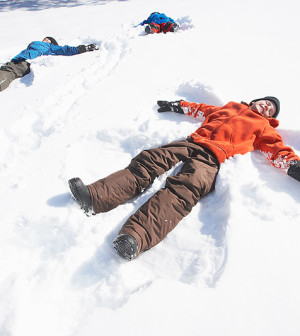- Airport and Aircraft Noise Can Hurt Your Heart
- Sugary Drinks Are To Blame for Millions of Diabetes, Heart Disease Cases Worldwide
- Can the Mediterranean Diet Boost Your Memory?
- Morning Coffee Linked to Longer Life, Heart Health Benefits
- Diabetes Prevention Program Saves People Money, Study Shows
- Despite Previous Data, Paxlovid May Be Useful for Long Covid After All
- Some GLP-1s Achieve More Weight Loss Than Others: Study
- More Evidence Bolsters the Oral Herpes and Alzheimer’s Link
- Health Advocates Are Unhappy with FDA Guidance on Lead Levels in Baby Food
- FDA Calls for Better Accuracy of Pulse Oximeters in People of Color
Injuries at Indoor Trampoline Parks Jump

A wave of injuries at indoor trampoline parks has prompted a call for design and safety standards.
In a small study, Australian researchers described injuries occurring at the parks as “an emerging public health concern.”
They reported that over six months, one Australian trauma center treated dozens of kids who were hurt at indoor trampoline parks.
Between July 2014 and January 2015, its emergency room treated 40 children for trampoline park injuries. Their average age was 10, and the youngest child was 1.
Thirty-three injuries occurred on the trampoline and 18 resulted from a bad landing. Eight injuries happened when several kids of different sizes used a trampoline at the same time.
About half of the children were hurt while jumping, and five were injured while trying somersaults or flips. Six kids were hurt when they landed awkwardly on part of the trampoline, including on protective padding on the trampoline springs.
Bruises and ankle sprains accounted for 55 percent of the injuries, but more than a third of the kids had broken bones (elbows and ankles). Five children needed surgery and were admitted to the hospital.
The study was published Aug. 15 in the journal Injury Prevention.
The findings were similar to those of a larger U.S. study published in early August. It reported a 12-fold increase in the number of patients treated at U.S. emergency rooms for injuries at trampoline parks — from 581 in 2010 to nearly 7,000 in 2014.
With the growing popularity of indoor trampoline parks, design and safety standards are needed to prevent injuries, the Australian researchers said.
They noted that injury prevention efforts have largely focused on home trampolines, rather than commercial trampoline parks.
The latest study was led by Christopher Mulligan, a clinician based at the University of South Wales’ Randwick Health Campus and Neuroscience Research Australia.
More information
The American Academy of Pediatrics has more about trampolines.
Source: HealthDay
Copyright © 2025 HealthDay. All rights reserved.









